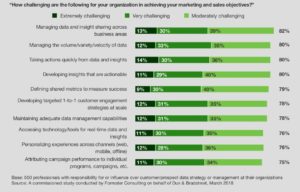In a well-known children’s book called If You Give a Mouse a Cookie, a boy’s initial decision to give a mouse a cookie sets off a domino effect of one new requirement after another. It’s a great story about unintended consequences and the need to take responsibility for them.
The story is a useful lens through which to view the early momentum for moving away from an AUM-based fee to a recurring fee. Three recent articles highlighted this shift: two addressing discussions at LPL Focus (one from Financial Advisor and one from Wealthmanagement.com) and one sharing the results of a survey.
Without a doubt, recurring fees – and the steady revenue they produce – can be an attractive business model. Just ask Netflix or Salesforce. The appeal may be even greater if you’re an advisor whose primary alternative is a model in which you make less money when the market dives while you’re working even harder to satisfy clients who are unhappy with their portfolio losses.
But here’s the catch: You can’t shift to a recurring, subscription-like fee and still do the same things as before. Why? Because charging a monthly fee and delivering tangible value only two or four times a year means you’ll likely end up with unhappy and angry clients. Two totally unintended consequences.
If you decide to make the shift to a recurring fee, you also need to change two key elements: value delivery and measurement of client satisfaction:
Value Delivery. It’s entirely reasonable for a person who pays a fee every month to expect to realize value for that fee on a monthly basis. If Netflix didn’t spend millions of dollars on content and instead only offered old movies, you would cancel your subscription. If you could never get to the gym because you didn’t have time or there was a pandemic, you’d cancel your membership. Advisors have always had to face the question of “what am I getting for my money and is it worth it?” Under a recurring fees system, it’s even more important that the answer to that question is “yes”. Advisors need to ensure that they are explicitly delivering value to their clients on a regular, ongoing basis.
Client Satisfaction. If an advisor charges a fee based on AUM, it’s reasonable to assume that the client’s satisfaction will be driven by the growth of his/her portfolio. Shifting away from this fee model requires also moving away from the assumption about satisfaction. Portfolio performance will undoubtedly always be a piece of the equation when it comes to assessing the health of client relationships, but under a recurring fee model with ongoing value delivery, it can’t be the only piece. Client relationship health will increasingly be based on the frequency and quality of communications, the accessibility and easy use of technology tools, and the availability of ad hoc support and guidance.
The bottom line: People pay and assess satisfaction based on the value they receive. If advisors who shift to a recurring fee don’t acknowledge this reality of human nature, they will undoubtably face the unintended consequences of losing clients and referrals.
